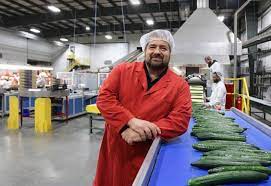
Living
Canadian Company Heeds Consumer Call For Plastic-free Cucumbers
Conveyor belts piled with newly harvested cucumbers off vines hanging from the glass roof of a neighboring greenhouse were a welcome sight to Dino DiLaudo.
That batch of cucumbers was about to go through a process that would remove millions of tons of one-time-use plastic from the distribution chain.
As a result of customer feedback, Westmoreland Topline Farms has developed a no-plastic cucumber export system.
As of June 2022, the producer in Leamington, Ontario, will be the first to export English cucumbers that aren’t separately plastic packaged throughout Canada.
Instead, Apeel Sciences has created a plant-based solution that is digestible, bland, and enhances the cucumber’s inherent shelf life.
A plant-based, organic product
The new treatment, according to DiLaudo, is both long-term and reduces cost. To prevent oxidation and premature spoilage, he explained that the plastic was dedicated to keeping the cucumber’s respiration controlled.
“We’re eliminating plastic and using an organic, plant-based substance to preserve the cucumbers.”
For nearly 10 years, Apeel Sciences, located in California, has been researching strategies to decrease or eliminate plastics from the production sector.
The company’s New Commodity Vice President, Ravi Jolly, said, “We gained awareness of this problem of plastic being utilized to help with retaining moisture and retain the cucumbers’ freshness.”
“We’re giving consumers a choice, a more environmentally-friendly choice.”
Solutions Based On Consumer Needs
To coincide with the government’s announcement that some single-use plastics, such as straws, takeout containers, supermarket bags, and cutlery, will be banned over the next 18 months, these plastic-free cucumbers reached the shops this week.
According to Deloitte research released in 2019, fewer than 10 percent of the plastic garbage Canadians generate is recycled, which amounts to more than three million tons of plastic packaging being thrown away each year.
According to DiLaudo, “everyone wants to do their share” when it comes to being a good environmental steward.
According to him, the use of plastic packaging for seedless cucumbers has been a big industry issue.
He went on to say that eliminating plastic from just one batch of cucumbers is the same as erasing 100,000 drinking straws from the environment.
Environmental organization the Sierra Club Canada Foundation praised the decision.
As a facilitator for plastics, Lucy Bain noted her dislike for plastic-wrapped fruits in supermarkets. “A lot of times you can’t escape plastic,” she said.
Plastic pollution is a major concern for Canadians. Businesses should take this initiative because consumers wouldn’t want to be pushed to buy plastic things they don’t need, thus it’s fantastic that they are doing so.
She wishes to see a greater effort at the federal level to establish industry requirements and standards for businesses to reduce their reliance on plastic.
For us to be smarter users, the government must implement these guidelines. We shouldn’t have to decide in that regard.”
Cucumbers, according to DiLaudo, were the very first commodity to undergo this procedure at their organization, which is now exploring ways to eliminate plastic wrapping on other food items.
“We’re producing little seedless cucumbers that I believe will be the next best thing,” he remarked.
“It will become a positive thing for everyone if the grade of the cucumber isn’t sacrificed, I believe.”
Living
Advanced Technology Empowers Quadruple Amputee Jessica Haldin to Pursue Driving
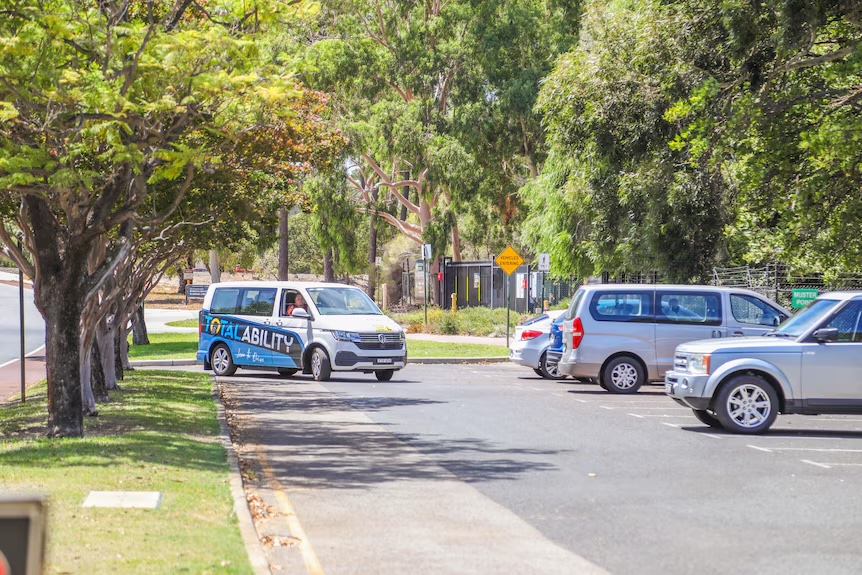
Jessica Haldin, who lost her limbs to meningococcal disease at age two, once believed driving was out of her reach. Growing up in Rockingham, a suburb of Perth, she watched her friends earn their driver’s licenses, symbolizing freedom she longed for but felt was unattainable. However, now at 33, Jessica is learning to drive using a specially modified vehicle equipped to accommodate her needs as a quadruple amputee.
Five years ago, Jessica’s coordinator encouraged her to pursue driving, assuring her that she could obtain a license and secure necessary funding. Today, her vehicle is fitted with a joystick for steering, braking, and accelerating, along with a voice-activated system for controlling indicators, the horn, and other features. Despite the initial anxiety, Jessica’s first driving lesson was a profound step toward independence.
The journey to this point wasn’t simple; securing approval and funding from the National Disability Insurance Scheme (NDIS) was a lengthy process. Yet, the possibility of gaining mobility and freedom has greatly excited Jessica. She expressed a desire to escape the confines of her home life, where she largely depends on her mother, and explore places like Margaret River and Albany on her own.
Tamlyn Macdonald, Jessica’s support worker, expressed pride in her progress, noting that helping clients achieve independence is the ultimate goal of the NDIS. She looks forward to transitioning from caregiver to friend as Jessica gains more autonomy.
Mikayla Kongram, an occupational therapist and driving instructor, highlights that Jessica’s story is becoming increasingly common as technology advances. She sees daily how vehicle modifications enable those with disabilities to drive, expanding their world dramatically compared to the pre-NDIS era. Despite some individuals still facing challenges due to physical limitations, technological innovations continue to broaden possibilities, allowing more people with disabilities to experience the independence of driving.
Living
Biggest Sea Turtle Release Ever on Georgia’s Jekyll Island
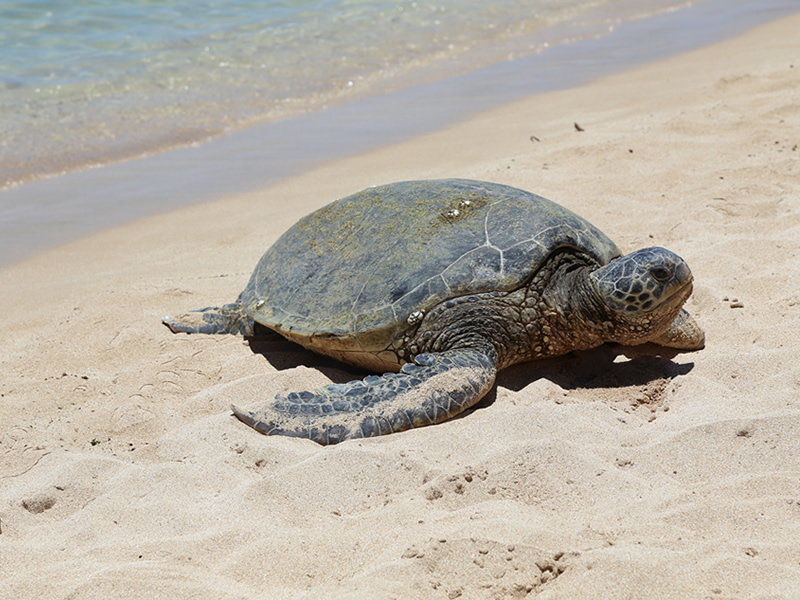
In two days, Georgia will witness its largest sea turtle release ever on Jekyll Island. The Georgia Sea Turtle Center announced that over 30 turtles will be returned to the sea. These turtles come from various places like Turtles Fly Too, NOAA, Mystic Aquarium, New York Rescue Center, and New England Aquarium.
Many of these sea turtles needed help because they were cold-stunned, but now they are better and ready to go back to the ocean.
Sea turtles are fascinating creatures. They live in oceans around the world and are known for their long migrations. Some species travel thousands of miles to lay their eggs on the same beaches where they were born. They are also ancient animals, having been around for over 100 million years, which means they shared the planet with dinosaurs.
Sea turtles like to eat a variety of foods. Depending on the species, their diet can include jellyfish, seaweed, crabs, shrimp, and even small fish. They have a unique way of navigating the ocean, using the Earth’s magnetic field to find their way.
Unfortunately, sea turtles face many challenges. They are threatened by habitat loss, pollution, climate change, and accidental capture in fishing gear. That’s why the work of rescue centers and rehabilitation programs is so important to help these vulnerable sea creatures survive and thrive in their natural habitat.
Living
Drones Are A Powerful Ally For Animal Right Campaigners
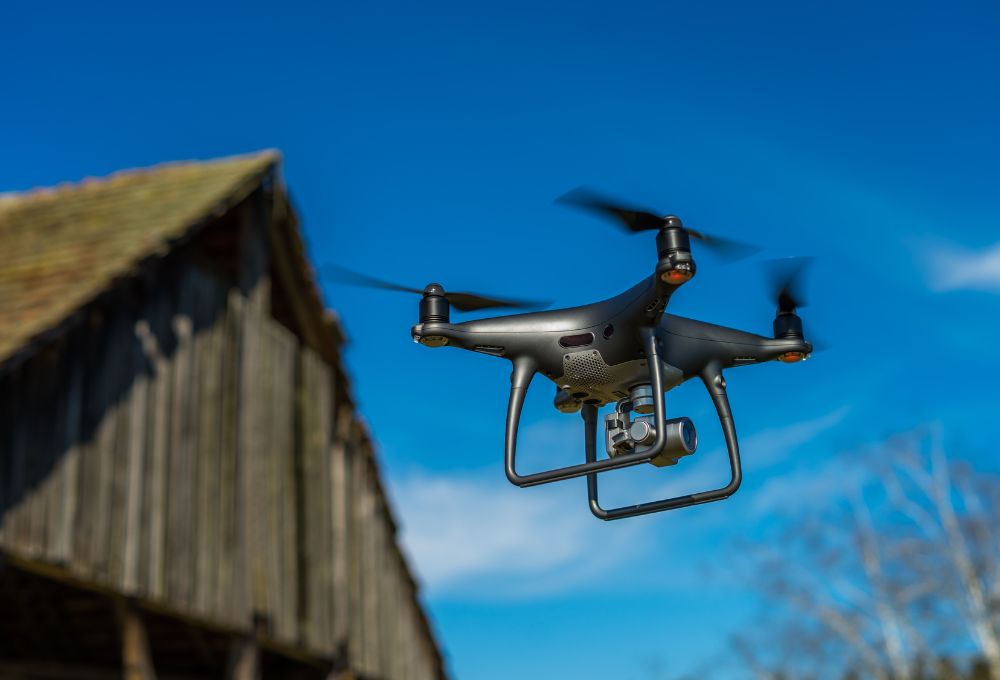
Drones have become powerful allies for animal rights campaigners, offering a bird’s-eye view that’s hard to beat. These flying gadgets are not only affordable but also simple to operate, making them perfect for keeping an eye on illegal activities like fishing, hunting, and deforestation. They’re also great for monitoring conditions in zoos and aquariums.
A striking example comes from UrgentSeas, an organization that sprang into action after hearing about a lonely manatee at the Miami Seaquarium. Using drones, they captured footage of the manatee, named Romeo, in a neglected pool. The video went viral, leading to public outrage and eventually the relocation of Romeo and his mate Juliet to a sanctuary.
Since their introduction in the early 2010s, drones have been revolutionary for groups like PETA, who’ve used them to uncover illegal hunting activities. In marine conservation, drones offer an unparalleled view of the living conditions of sea creatures, highlighting the cramped spaces in some facilities.
Sea Shepherd, a marine conservation group, utilizes drones to document illegal fishing activities in international waters. The advancements in drone technology have made these devices quieter and more discreet, crucial for documenting illegal actions without alerting the perpetrators. Simon Ager of Sea Shepherd emphasizes the effectiveness of drones in these operations, noting their ability to capture evidence of illegal activities from a safe distance, thus reducing the risk to conservationists.
In essence, drones are more than just tools; they represent a shift in how activists and conservationists can safely and effectively gather evidence, raise awareness, and prompt action to protect animals and their habitats. They enable discreet observations and can reach places that are otherwise inaccessible or risky for humans, proving to be an indispensable asset in the fight for animal rights and environmental protection.
Living
New Bazaar Blends American & Indian Cultures
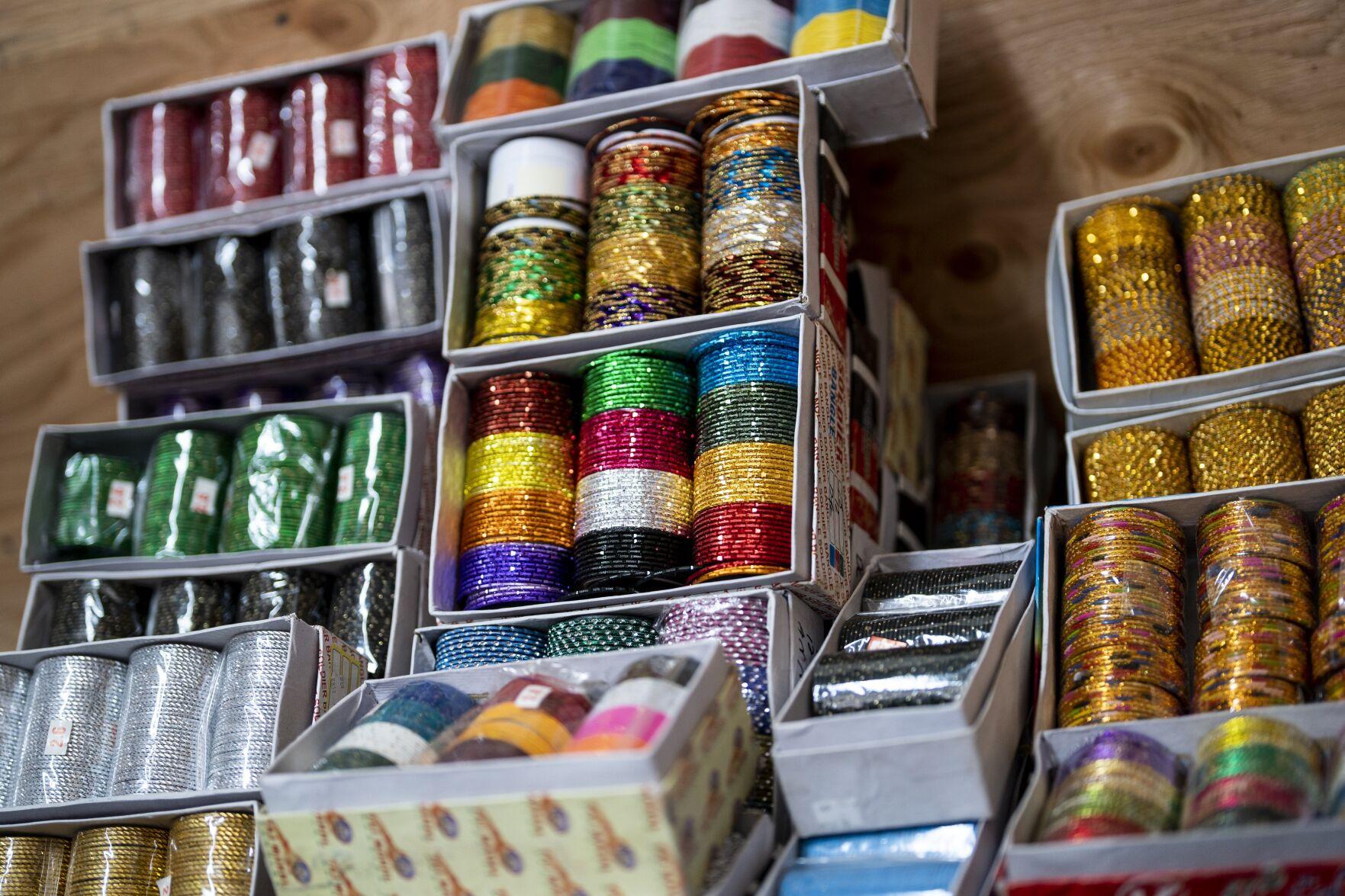
In Buffalo’s East side, something exciting is happening at the Buffalo Trade Center! It’s becoming a bustling market, blending Indian and American cultures, thanks to Samad, a visionary with Indian roots but raised in the U.S. This new market isn’t just any ordinary place; it’s a vibrant bazaar with 30 vendor stalls, offering a sneak peek into a future filled with shops, a halal supermarket, offices, a playground for kids, a restaurant, a food hall, and a community center.
Samad, together with his uncles Khaled Ali, Iqbal Ali, Moynul Samad, and Faisal Ahmed, owns this center. They’re embarking on an ambitious project, starting with the vendor stalls and a retail liquidation center, all set to open this summer. But the excitement has already begun with a pop-up vendor festival, especially timed for Ramadan, attracting thousands of people and giving a taste of what’s to come.
This market is more than just a place to shop; it’s a springboard for aspiring business owners. Samad’s idea is to create a space where anyone with a dream can start their business journey with minimal initial costs and supportive surroundings. Last year, this place drew in 5,000 visitors, and it’s clear it has a special vibe that people love.
Samad’s vision extends beyond business. He aims to build a community that reflects the diversity and inclusivity of Buffalo itself. He’s looking for vendors who are not only entrepreneurial but also kind and welcoming to everyone, reinforcing that the Buffalo Trade Center is a place for all, not just for the Bangladeshi community.
Through Samad’s efforts, the Buffalo Trade Center is set to be a hub where different cultures meet and mingle, proving that despite our diverse backgrounds, we share more similarities than differences. This market is shaping up to be a place where community, culture, and commerce come together beautifully.
Living
Eagle Rescue: Maryland Officer Saves Bald Eagle Trapped in Car Grille
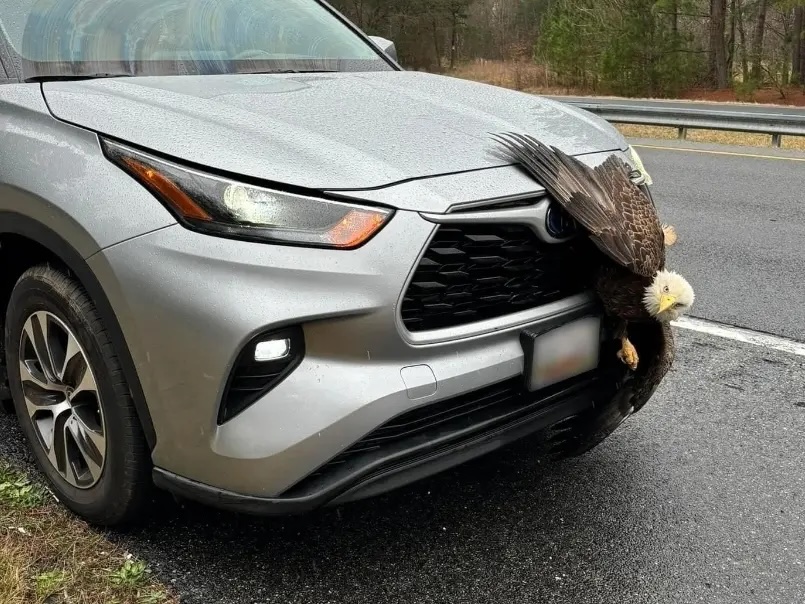
In Calvert County, Maryland, a bald eagle had a close call after it got trapped in the front grille of an SUV. This unusual rescue story started when a driver hit the eagle on Route 4 last weekend. Despite the scary collision, the eagle survived, but its legs were caught in the car’s grille.
The driver quickly called for help, and Animal Control Officer Hannah Neel rushed to the scene. With her background as an emergency veterinary technician, Officer Neel was well-prepared to help the eagle. She even contacted a local veterinary hospital right away, just in case the bird needed immediate medical care.
When Officer Neel arrived, she found that, thankfully, the eagle wasn’t hurt. She carefully checked the eagle to make sure it wasn’t showing any signs of injury or illness. Neel found that the eagle could move all its legs and was responding normally, which was a good sign.
With help from the Calvert County Sheriff’s Office and the driver’s permission, Officer Neel managed to free the eagle from the grille. After making sure the eagle was okay, she released it back into the woods, where it could fly free again.
Julie Yingling, a county spokesperson, praised the teamwork that led to the eagle’s safe rescue. She expressed gratitude for the community’s support and concern for the eagle, as well as for everyone involved in the rescue effort.
This incident shows how quick action and collaboration can lead to a happy ending, even in unexpected situations like an eagle getting stuck in a car grille. Thanks to Officer Neel and the team’s efforts, the bald eagle was able to return to the wild, safe and sound.
-

 OMG6 years ago
OMG6 years agoA Couple Gave Birth to the Most Beautiful Twins Ever
-

 OMG6 years ago
OMG6 years ago20 Rare Historical Photos
-

 OMG6 years ago
OMG6 years agoHilarious Airport Photos
-

 Cute6 years ago
Cute6 years agoMom Refuses to Let Daughter Eat Sugar and Years Later This is What She Grows Into
-

 OMG5 years ago
OMG5 years agoTop Secret Air Force One Facts That You Never Knew
-
OMG5 years ago
The Funniest Yearbook Photos Of All Time
-

 OMG6 years ago
OMG6 years agoRetired Mathematician Restores Log Cabin
-

 OMG4 years ago
OMG4 years agoWhat Happened When This ‘Duck Dynasty’ Legend Chopped Off His Beard?